Matic Network - Enhancing Ethereum Scalability
The Matic Network, now rebranded as Polygon, has emerged as a groundbreaking solution aimed at addressing one of the most pressing challenges in the blockchain world: Ethereum's scalability. As more users flock to decentralized applications (dApps) and smart contracts, the Ethereum network has experienced significant congestion, leading to slower transaction times and skyrocketing fees. This is where Matic steps in, offering a breath of fresh air to developers and users alike. By leveraging innovative Layer 2 technology, Matic enables transactions that are not only faster but also cheaper, all while ensuring the security and decentralization that the Ethereum community values so deeply.
Imagine trying to navigate a busy highway during rush hour. Cars are honking, and progress is painfully slow. Now, picture a side road that allows you to bypass the traffic entirely, getting you to your destination much quicker. This analogy perfectly encapsulates what Matic Network does for Ethereum. It creates a scalable environment that alleviates the congestion, allowing developers to build and deploy applications with ease. In this article, we will delve into the inner workings of Matic, its unique technologies, and the myriad of use cases it supports, all while looking toward its promising future.
Matic Network, now known as Polygon, offers solutions to Ethereum's scalability issues by utilizing Layer 2 technology, enabling faster and cheaper transactions while maintaining security and decentralization. With the rise of decentralized finance (DeFi), non-fungible tokens (NFTs), and various blockchain applications, the need for a robust solution to Ethereum's limitations has never been more critical. Matic has positioned itself as a key player in this transformation, allowing users to enjoy a seamless experience without the typical bottlenecks associated with the Ethereum mainnet.
Matic employs a unique combination of the Plasma framework and Proof-of-Stake consensus to enhance transaction throughput, allowing for a more efficient processing of smart contracts and decentralized applications. By utilizing these technologies, Matic not only increases the speed of transactions but also ensures that they remain secure and reliable. This dual approach is crucial for the long-term success and adoption of the network, as it addresses both the operational and security concerns that come with scaling blockchain technology.
The Plasma framework allows Matic to create child chains that process transactions off the main Ethereum chain, significantly reducing congestion and improving overall network performance. Think of it as a series of smaller highways branching off from the main road, each designed to handle a specific type of traffic. This structure enables Matic to manage a higher volume of transactions without overwhelming the Ethereum network.
Child chains are separate blockchains that operate under the main Ethereum blockchain, facilitating faster transactions and enabling developers to build scalable applications without compromising security. These chains can handle numerous transactions independently, which is crucial for the growing demands of dApps and other blockchain services. The result? A more fluid and efficient user experience that encourages wider adoption of blockchain technology.
Using Plasma ensures that the main Ethereum chain remains secure while allowing for increased transaction speeds and lower fees, making it an attractive option for developers and users alike. Here are some key benefits:
- Reduced Congestion: By offloading transactions to child chains, Matic alleviates the pressure on the Ethereum mainnet.
- Lower Fees: Users can enjoy significantly reduced transaction costs, making dApps more accessible.
- Enhanced Security: The integrity of the main Ethereum chain is preserved, ensuring a secure environment for all transactions.
Matic's Proof-of-Stake consensus mechanism incentivizes validators to secure the network, ensuring that transactions are processed quickly and efficiently while maintaining decentralization. Unlike traditional Proof-of-Work systems, which can be energy-intensive and slow, Proof-of-Stake allows validators to participate based on the number of tokens they hold and are willing to "stake" as collateral. This not only enhances security but also promotes a more eco-friendly approach to blockchain technology.
Matic Network supports various use cases, including decentralized finance (DeFi), non-fungible tokens (NFTs), and gaming, showcasing its versatility and potential to transform multiple sectors within the blockchain ecosystem. With its ability to handle high transaction volumes and low fees, Matic has become a preferred choice for developers looking to create innovative applications that cater to a growing user base.
Matic Network enables DeFi applications to operate with lower fees and faster transactions, allowing users to trade, lend, and borrow assets seamlessly without the typical Ethereum congestion. This enhanced efficiency opens the door for more users to engage with DeFi, democratizing access to financial services that were once limited to a select few.
The NFT sector benefits from Matic's scalability solutions, allowing creators and collectors to buy, sell, and trade digital assets with reduced transaction costs and improved user experiences. As the demand for NFTs continues to grow, Matic provides the necessary infrastructure to support this burgeoning market, making it easier for artists and collectors to engage without worrying about exorbitant fees.
The future of Matic Network looks promising as it continues to evolve and integrate with Ethereum 2.0, potentially becoming a vital component in the broader blockchain ecosystem. With ongoing developments and enhancements, Matic is poised to play a significant role in shaping the future of decentralized applications and blockchain technology.
Matic Network aims to work in harmony with Ethereum 2.0, enhancing scalability and reducing energy consumption, thus supporting a sustainable and efficient blockchain environment. This integration could lead to a more robust ecosystem that benefits all participants, from developers to end-users.
A strong developer community and ongoing projects ensure Matic's growth, fostering innovation and collaboration that will drive the network's adoption and long-term success. As more developers flock to the platform, we can expect to see a surge in innovative applications that leverage Matic's unique capabilities.
What is Matic Network?
Matic Network, now known as Polygon, is a Layer 2 scaling solution for Ethereum that enhances transaction speed and reduces costs.
How does Matic improve Ethereum's scalability?
Matic utilizes a combination of the Plasma framework and Proof-of-Stake consensus to create child chains that process transactions off the main Ethereum blockchain.
What are the benefits of using Matic?
Some benefits include reduced transaction fees, faster processing times, and enhanced security for decentralized applications.
What use cases does Matic support?
Matic supports a variety of use cases, including decentralized finance (DeFi), non-fungible tokens (NFTs), and gaming applications.
What does the future hold for Matic Network?
The future looks bright as Matic continues to evolve and integrate with Ethereum 2.0, aiming to provide a sustainable and efficient blockchain environment.
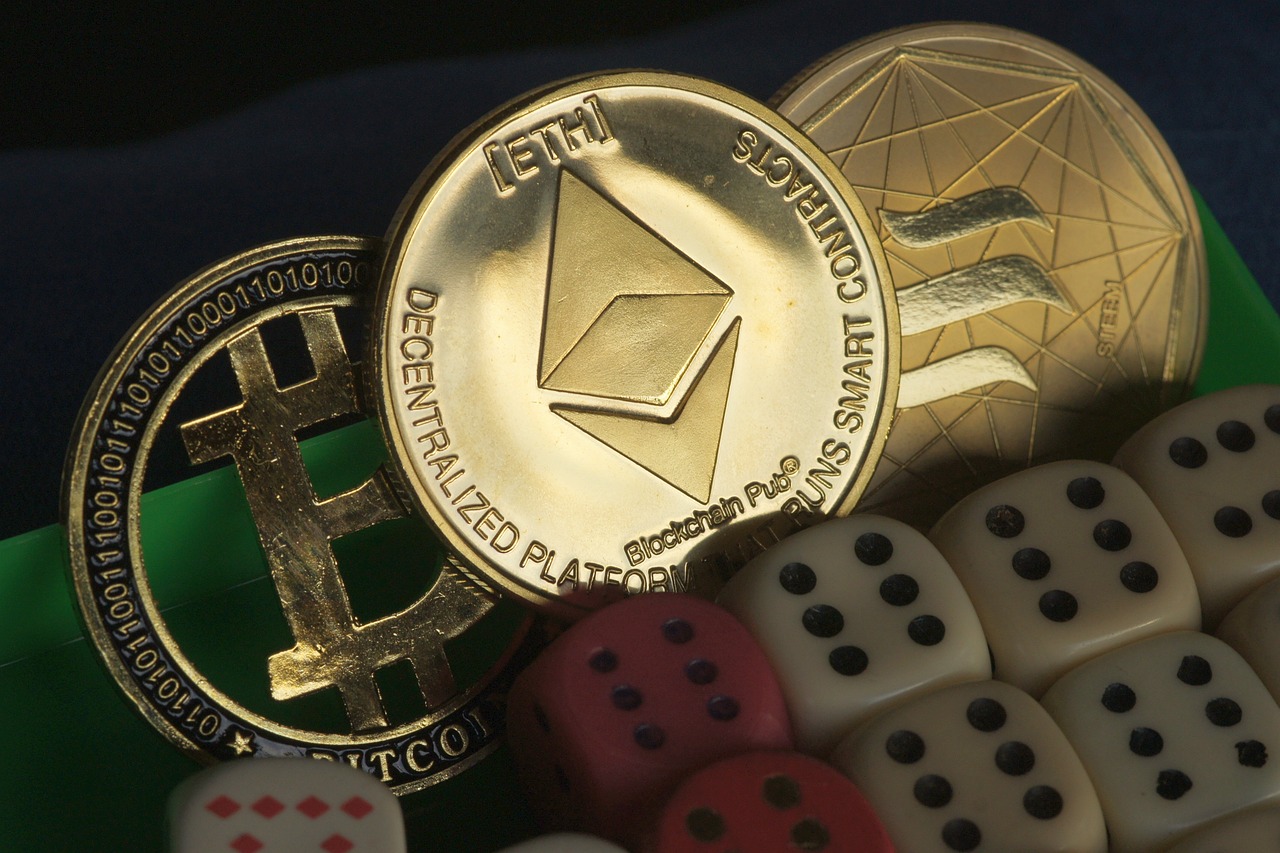
[Introduction to Matic Network]
Matic Network, which has now rebranded as Polygon, is a groundbreaking solution designed to tackle the persistent scalability issues faced by the Ethereum blockchain. Imagine trying to squeeze through a crowded subway station during rush hour; that's how congested Ethereum can get during peak times. With Matic, users can experience a smoother, faster, and more cost-effective journey through the world of decentralized applications (dApps) and smart contracts.
This innovative Layer 2 technology enhances Ethereum's capabilities by allowing transactions to be processed off the main chain. Think of it as a side road that alleviates traffic on a busy highway. By utilizing this approach, Matic Network not only speeds up transaction times but also significantly reduces the fees associated with them, making it an attractive option for developers and everyday users who are tired of waiting for their transactions to go through.
One of the standout features of Matic is its ability to maintain the security and decentralization that Ethereum is known for. While some alternatives might sacrifice these core principles for the sake of speed, Matic ensures that users can enjoy the best of both worlds. In essence, it enhances Ethereum's scalability without compromising on its foundational values.
As we delve deeper into the workings of Matic, we’ll uncover the unique technologies that power this network, including the innovative Plasma framework and the efficient Proof-of-Stake consensus mechanism. These elements are pivotal in creating a robust environment for the next generation of dApps and blockchain technology, paving the way for a more scalable and user-friendly ecosystem.
In summary, Matic Network stands as a beacon of hope for Ethereum enthusiasts and developers alike, offering a solution that addresses critical scalability issues while preserving the integrity of the blockchain. As we explore its functionalities and potential applications, it becomes clear that Matic is not just a temporary fix but a vital component in the evolution of blockchain technology.

[How Matic Works]
The Matic Network, now known as Polygon, operates on a sophisticated framework that combines the best of both worlds: scalability and security. At its core, Matic utilizes a unique blend of the Plasma framework and a Proof-of-Stake (PoS) consensus mechanism. This combination not only enhances transaction throughput but also allows developers to build decentralized applications (dApps) that can operate smoothly without the usual hiccups associated with the Ethereum main chain.
One of the standout features of Matic is its ability to create child chains that work in tandem with the main Ethereum blockchain. Imagine the Ethereum network as a busy highway; during rush hour, traffic can come to a standstill, causing delays and frustration. Matic acts as a series of express lanes that alleviate this congestion, enabling faster and more efficient travel for vehicles (transactions) without compromising safety. This innovative approach significantly reduces the load on the Ethereum main chain, allowing it to maintain its integrity while facilitating a higher volume of transactions.
The Plasma framework is a game-changer for Matic. It allows the creation of these child chains, which are essentially smaller blockchains that process transactions off the main Ethereum chain. This offloading is crucial for enhancing overall network performance. By utilizing Plasma, Matic can achieve transaction speeds that are significantly higher than those found on the Ethereum main chain. This means that users can enjoy a seamless experience when interacting with dApps, whether they are trading tokens, engaging in DeFi activities, or simply sending assets to friends.
Child chains operate under the umbrella of the Ethereum blockchain, processing transactions independently while still being anchored to the main chain for security. This setup allows developers to create applications that can handle thousands of transactions per second, which is a stark contrast to the often congested Ethereum network. For developers, the ability to build scalable applications without sacrificing security is a huge advantage. It opens up a world of possibilities for innovation and creativity in the blockchain space.
Utilizing the Plasma framework offers numerous benefits, including:
- Increased Transaction Speeds: Transactions can be processed much faster than on the Ethereum main chain.
- Lower Fees: Users can enjoy significantly reduced transaction fees, making it more cost-effective to interact with dApps.
- Security Assurance: The main Ethereum chain remains secure, providing a robust foundation for the child chains.
Matic's Proof-of-Stake consensus mechanism is another critical component that enhances its functionality. In this system, validators are incentivized to secure the network by validating transactions and creating new blocks. This not only ensures that transactions are processed quickly but also maintains a decentralized environment. Think of it as a community of trusted individuals who work together to keep the network safe and efficient. The more validators there are, the more secure and reliable the network becomes, which is particularly important in the world of blockchain technology.
In summary, Matic Network's innovative approach to scalability through the Plasma framework and Proof-of-Stake mechanism is redefining how decentralized applications operate. By alleviating congestion on the Ethereum network and providing a secure, efficient alternative, Matic is paving the way for a future where blockchain technology can thrive without the limitations that currently hinder it.
Q1: What is the main advantage of using Matic Network?
A1: The main advantage of using Matic Network is its ability to provide faster and cheaper transactions compared to the Ethereum main chain, thanks to its use of child chains and the Plasma framework.
Q2: How does the Proof-of-Stake mechanism work in Matic?
A2: The Proof-of-Stake mechanism in Matic allows validators to earn rewards for securing the network by validating transactions, which helps maintain decentralization and efficiency.
Q3: Can developers build dApps on Matic?
A3: Yes, developers can build scalable dApps on Matic Network, taking advantage of its enhanced transaction speeds and reduced fees.

[Plasma Framework]
The Plasma framework is a groundbreaking technology that plays a pivotal role in the functionality of the Matic Network, now known as Polygon. It essentially allows for the creation of child chains that can operate independently while still being anchored to the main Ethereum blockchain. This separation is crucial because it alleviates congestion on the Ethereum network, which has historically struggled with high transaction volumes. By shifting the bulk of transaction processing off the main chain, Plasma enables Matic to deliver faster and cheaper transactions without sacrificing security.
Imagine the Ethereum blockchain as a busy highway during rush hour. Vehicles (transactions) are trying to move, but the road is clogged, causing delays. Now, envision the Plasma framework as a series of side roads that allow some of that traffic to bypass the congestion, ensuring that vehicles can reach their destinations more swiftly. This is how Plasma enhances the overall performance of the network.
One of the standout features of Plasma is its ability to maintain a high level of security while providing scalability. It does this by creating a structure where the main chain (Ethereum) serves as the ultimate authority. Any disputes or security concerns can be resolved by reverting back to the main chain, ensuring that users’ assets remain safe. This mechanism is especially appealing for developers looking to build scalable applications without compromising on security.
In addition to speeding up transactions, Plasma also reduces transaction fees significantly. This is particularly beneficial for users engaging in microtransactions or those who frequently trade on decentralized exchanges. The reduced fees lower the barrier to entry for new users and encourage more activity within the ecosystem.
To summarize, the Plasma framework is a game-changer for the Matic Network. By enabling the creation of child chains, it not only enhances transaction speeds but also maintains the security of the Ethereum blockchain. This makes Matic an attractive platform for developers and users alike, paving the way for a more scalable and efficient blockchain environment.
Here’s a quick overview of the benefits of the Plasma framework:
| Benefit | Description |
|---|---|
| Scalability | Allows for faster transaction processing by offloading transactions from the main chain. |
| Lower Fees | Reduces transaction costs, making it more affordable for users. |
| Security | Maintains the security of assets by anchoring child chains to the main Ethereum blockchain. |

[Child Chains Explained]
The concept of child chains is pivotal to understanding how Matic Network (now Polygon) enhances the Ethereum ecosystem. In simple terms, child chains are independent blockchains that operate alongside the main Ethereum blockchain, enabling them to process transactions more efficiently. Think of the main Ethereum chain as a busy highway, where every vehicle represents a transaction trying to get to its destination. Now, imagine child chains as off-ramps that allow some of these vehicles to bypass the congestion on the highway, thus ensuring that traffic flows smoothly.
Each child chain can handle its own transactions, which means that they can operate at a much higher speed than the main chain. This is particularly crucial during periods of high demand when the Ethereum network experiences congestion. By diverting transactions to these child chains, Matic effectively reduces the load on Ethereum, allowing for a more scalable solution. Developers can create decentralized applications (dApps) on these child chains without worrying about the limitations posed by the main Ethereum network.
The beauty of child chains lies not only in their ability to process transactions quickly but also in their security model. They inherit the security features of the main Ethereum blockchain while still providing the flexibility needed for developers to innovate. This dual-layer approach helps maintain the decentralization that is so vital to the ethos of blockchain technology.
To give you a clearer picture, let's consider some key characteristics of child chains:
| Feature | Description |
|---|---|
| Independence | Child chains operate independently, allowing them to process transactions without burdening the main chain. |
| Scalability | They can handle thousands of transactions per second, significantly enhancing throughput. |
| Security | Child chains utilize Ethereum's security while offering flexibility for developers. |
| Cost Efficiency | Transactions on child chains typically incur lower fees compared to those on the main Ethereum chain. |
In summary, child chains are a game-changer for the Matic Network. They not only alleviate congestion on the Ethereum blockchain but also empower developers to create scalable and efficient dApps. By leveraging child chains, Matic is paving the way for a more robust and user-friendly blockchain ecosystem.
- What are child chains? Child chains are independent blockchains that operate alongside the main Ethereum blockchain, allowing for faster and more efficient transaction processing.
- How do child chains improve scalability? By processing transactions off the main chain, child chains reduce congestion and increase the overall throughput of the network.
- Are child chains secure? Yes, child chains inherit the security features of the main Ethereum blockchain, ensuring a high level of security while allowing for flexibility.
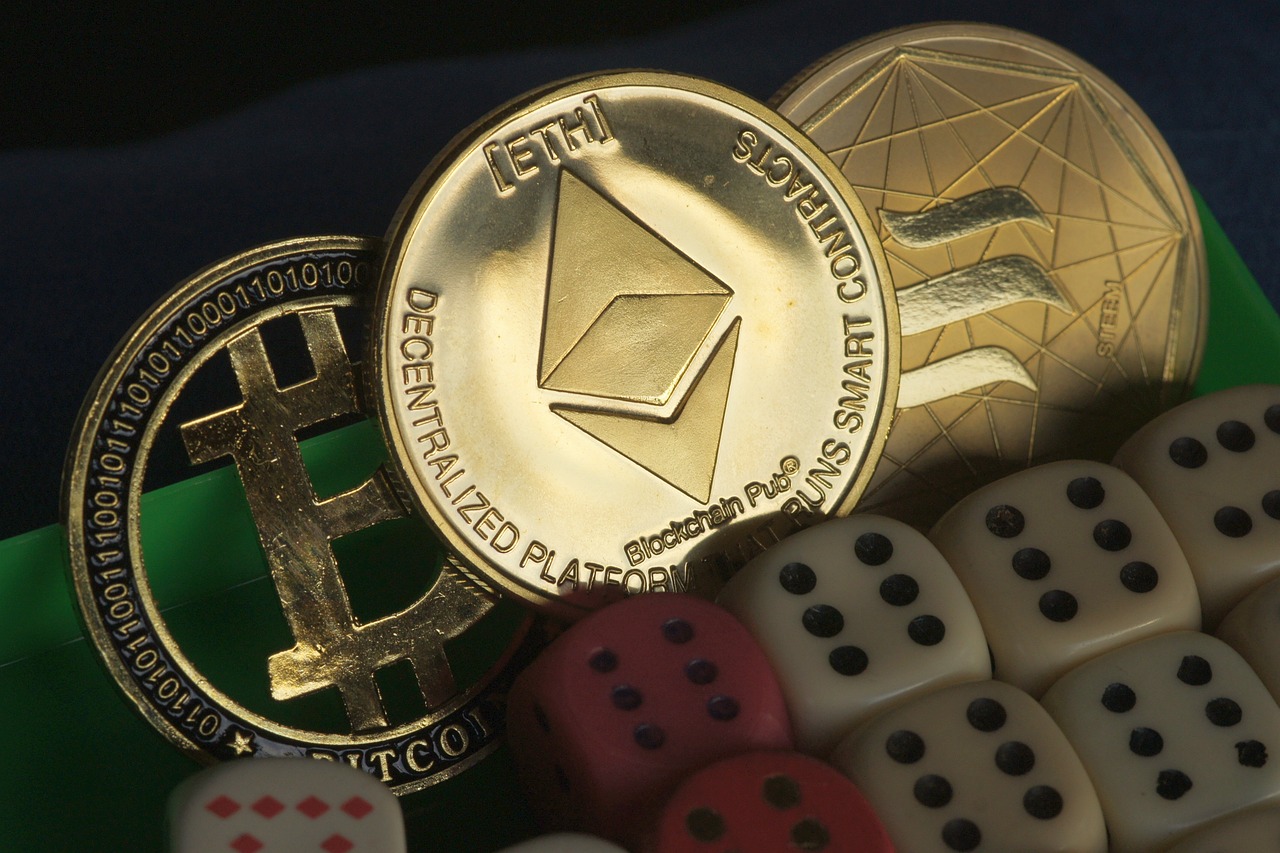
[Benefits of Plasma]
The Plasma framework is a game changer for the Matic Network, bringing a multitude of benefits that enhance the overall functionality and user experience of the Ethereum blockchain. One of the most significant advantages is the ability to process transactions off the main Ethereum chain. This means that while Ethereum may be experiencing high traffic and congestion, Matic can still handle transactions swiftly and efficiently. Imagine a bustling highway during rush hour; Plasma acts like a series of express lanes, allowing vehicles to bypass the traffic and reach their destination faster.
Moreover, Plasma facilitates lower transaction fees. By offloading transactions to child chains, users can enjoy significantly reduced costs compared to the often exorbitant fees seen on the Ethereum mainnet. This affordability opens the doors for a broader audience, enabling more users to participate in decentralized applications (dApps) without the fear of being priced out. In essence, Plasma democratizes access to blockchain technology.
Another noteworthy benefit is the enhanced security that Plasma provides. While transactions are processed on child chains, they are still anchored to the Ethereum main chain, ensuring that the security protocols of Ethereum are upheld. This dual-layer security means that even as transactions occur at lightning speed, users can rest easy knowing their assets are protected. It’s like having a safe deposit box in a bank while also having a personal safe at home; both offer security, but one is more accessible.
Additionally, the Plasma framework supports the development of scalable applications. Developers can create dApps that can handle a higher volume of transactions without compromising performance. This scalability is crucial for the growth of the blockchain ecosystem, as it allows for the creation of more complex and feature-rich applications that can cater to a larger audience. The flexibility of Plasma means that as the demand for blockchain technology grows, Matic can adapt and evolve to meet those needs.
To summarize the benefits of Plasma, consider the following table:
| Benefit | Description |
|---|---|
| Faster Transactions | Processes transactions off the main Ethereum chain, reducing congestion. |
| Lower Fees | Significantly reduced transaction costs compared to Ethereum mainnet. |
| Enhanced Security | Maintains Ethereum's security protocols while processing transactions. |
| Scalability | Supports the development of applications that can handle high transaction volumes. |
In conclusion, the Plasma framework is not just a technical enhancement; it is a vital component that empowers the Matic Network to address Ethereum's scalability challenges effectively. By offering faster, cheaper, and more secure transactions, Plasma paves the way for a more accessible and efficient blockchain ecosystem.
- What is the main purpose of Plasma? Plasma aims to enhance transaction speeds and reduce fees on the Ethereum network by processing transactions on child chains.
- How does Plasma ensure security? Plasma maintains security by anchoring child chains to the Ethereum main chain, leveraging its robust security protocols.
- Can developers create scalable applications using Plasma? Yes, Plasma allows developers to build scalable dApps that can handle a larger volume of transactions.
- What are the cost benefits of using Matic Network? Users can enjoy significantly lower transaction fees compared to those on the Ethereum mainnet, making it more accessible.

[Proof-of-Stake Mechanism]
The Proof-of-Stake (PoS) mechanism is a game changer for the Matic Network, providing a robust framework that not only enhances security but also ensures efficient transaction processing. Unlike the traditional Proof-of-Work model, which relies on computational power and energy consumption, PoS allows validators to secure the network based on the number of tokens they hold and are willing to "stake" as collateral. This innovative approach fosters a more eco-friendly environment while maintaining decentralization, which is crucial for the integrity of any blockchain.
So, how does it work? When a user stakes their MATIC tokens, they effectively become a validator, taking on the responsibility of confirming transactions and adding them to the blockchain. In return for their efforts, these validators receive rewards, which incentivizes them to act honestly and maintain the health of the network. The more tokens a validator stakes, the greater their chances of being selected to validate transactions, creating a competitive yet fair ecosystem.
One of the most significant advantages of the PoS mechanism is its ability to process transactions at lightning speed. In a world where time is money, Matic's PoS system ensures that transactions are executed quickly, allowing users to enjoy seamless interactions without the frustration of long wait times. This is particularly beneficial for decentralized applications (dApps) that require real-time processing, such as gaming and finance applications.
Moreover, the PoS model contributes to the overall security of the Matic Network. Validators are financially invested in the network's success, as their staked tokens are at risk if they engage in malicious activities. This creates a natural deterrent against fraud and ensures that validators are motivated to uphold the network's integrity.
To illustrate the benefits of the Proof-of-Stake mechanism, consider the following table:
| Feature | Proof-of-Stake | Proof-of-Work |
|---|---|---|
| Energy Efficiency | High | Low |
| Transaction Speed | Fast | Slow |
| Decentralization | Maintained | Potentially compromised |
| Validator Incentives | Staking rewards | Mining rewards |
In conclusion, the Proof-of-Stake mechanism implemented by the Matic Network not only enhances transaction efficiency but also promotes a secure and sustainable blockchain environment. By shifting away from energy-intensive mining practices, Matic is paving the way for a more eco-friendly future in the blockchain space. As the network continues to grow, the PoS model will play a pivotal role in ensuring that Matic remains a leading choice for developers and users alike.
- What is Proof-of-Stake? Proof-of-Stake is a consensus mechanism that allows validators to secure the network based on the number of tokens they hold and stake.
- How does staking work in Matic Network? Users stake their MATIC tokens to become validators, confirming transactions and earning rewards for their participation.
- What are the benefits of using Proof-of-Stake? The benefits include energy efficiency, faster transaction speeds, maintained decentralization, and financial incentives for validators.

[Use Cases of Matic Network]
The Matic Network, now known as Polygon, is not just a technological marvel; it's a game changer for various sectors within the blockchain ecosystem. By significantly enhancing Ethereum's scalability, Matic opens the door to a plethora of use cases that can transform how we interact with decentralized applications (dApps). From decentralized finance (DeFi) to non-fungible tokens (NFTs) and gaming, the possibilities are virtually endless. Let's dive deeper into some of these exciting applications.
One of the most prominent use cases of the Matic Network is in the realm of Decentralized Finance (DeFi). Traditional financial systems are often bogged down by high fees and slow transaction times, but with Matic, users can experience a seamless trading, lending, and borrowing environment. Imagine being able to execute a trade in seconds rather than waiting for minutes or even hours—this is the reality that Matic offers. By leveraging its Layer 2 solutions, Matic allows DeFi platforms to operate at a fraction of the cost and time, making financial services accessible to a broader audience.
Another exciting area where Matic shines is the Non-Fungible Token (NFT) marketplace. The NFT sector has exploded in popularity, but with that surge comes the challenge of high gas fees on the Ethereum network. Matic's scalability solutions step in to alleviate this issue, allowing creators and collectors to buy, sell, and trade digital assets with significantly reduced transaction costs. This means that artists can mint their works without worrying about prohibitive fees, and collectors can acquire pieces without breaking the bank. The user experience is vastly improved, making the NFT space more inviting and accessible.
Furthermore, Matic's capabilities extend into the world of gaming. The gaming industry is rapidly adopting blockchain technology, and Matic provides the infrastructure necessary for developers to create engaging, scalable games. With faster transaction speeds, players can enjoy real-time interactions without the lag associated with congested networks. This not only enhances gameplay but also enables innovative features like true ownership of in-game assets. Imagine playing a game where you can trade your unique items on a marketplace without worrying about high fees or slow transactions—Matic makes this possible.
To illustrate the versatility of Matic, here’s a brief overview of some of the key use cases:
| Use Case | Description |
|---|---|
| Decentralized Finance (DeFi) | Facilitates low-cost, fast transactions for trading, lending, and borrowing. |
| Non-Fungible Tokens (NFTs) | Enables creators to mint and trade digital assets with reduced fees. |
| Gaming | Supports real-time interactions and true ownership of in-game assets. |
In conclusion, the Matic Network is not just a solution for Ethereum's scalability issues; it is a versatile platform that is paving the way for the future of blockchain technology. Whether it's improving the efficiency of DeFi applications, making NFTs more accessible, or creating immersive gaming experiences, Matic is at the forefront of innovation. As we continue to explore these use cases, it becomes clear that Matic has the potential to redefine how we interact with digital assets and decentralized applications.
Q1: What is the main benefit of using Matic Network?
A1: The primary benefit of the Matic Network is its ability to enhance Ethereum's scalability by providing faster and cheaper transactions, making it ideal for various applications such as DeFi, NFTs, and gaming.
Q2: How does Matic improve transaction speeds?
A2: Matic employs a combination of the Plasma framework and a Proof-of-Stake consensus mechanism, which allows it to process transactions off the main Ethereum chain, significantly reducing congestion and improving overall throughput.
Q3: Can developers build on Matic Network?
A3: Yes! Developers can easily build decentralized applications on the Matic Network, taking advantage of its scalability solutions to create efficient and cost-effective dApps.
Q4: Is Matic Network secure?
A4: Absolutely! Matic Network ensures security through its Proof-of-Stake mechanism and by leveraging the security of the Ethereum main chain, providing a secure environment for transactions and smart contracts.

[DeFi Applications]
Decentralized Finance, or DeFi, has taken the blockchain world by storm, and Matic Network, now known as Polygon, is at the forefront of this revolution. By providing a platform with lower fees and faster transaction speeds, Matic empowers users to engage in various financial activities without the frustrations typically associated with the Ethereum mainnet. Imagine being able to trade, lend, and borrow assets without the worry of exorbitant gas fees or long waiting times; that's the beauty of Matic's scalability solutions.
One of the most exciting aspects of Matic is its ability to facilitate a seamless user experience in DeFi applications. Users can interact with decentralized exchanges (DEXs) and lending platforms that operate efficiently on Matic's Layer 2 solution. This means that whether you're swapping tokens on a DEX or providing liquidity to earn interest, you can do so quickly and at a fraction of the cost compared to traditional Ethereum transactions.
For instance, consider the following benefits that Matic brings to DeFi applications:
- Lower Transaction Fees: Matic significantly reduces gas fees, making it affordable for users to engage in transactions that might otherwise be too costly on Ethereum.
- Faster Transactions: With Matic, transactions are confirmed in seconds, allowing for a more dynamic trading experience.
- Enhanced User Experience: The integration of Matic with popular DeFi protocols means users can enjoy a smoother interface and quicker interactions.
Moreover, Matic's compatibility with existing Ethereum-based DeFi projects means that developers can easily migrate their applications to Matic without having to rewrite their code from scratch. This ease of integration has led to a surge in DeFi projects launching on Matic, creating a vibrant ecosystem that attracts both developers and users alike. The synergy between Matic and DeFi is not just about speed and cost; it’s about creating an inclusive financial system where anyone can participate.
As we look towards the future, the potential for Matic in the DeFi space is enormous. With the ongoing advancements in blockchain technology and the increasing interest in decentralized financial services, Matic is well-positioned to become a key player in this arena. By continuing to innovate and improve its offerings, Matic Network is set to redefine how we think about finance in the digital age.
- What is Matic Network? Matic Network, now known as Polygon, is a Layer 2 scaling solution for Ethereum that aims to enhance transaction speed and reduce costs.
- How does Matic improve DeFi applications? Matic improves DeFi applications by providing faster transaction speeds and lower fees, enabling seamless trading, lending, and borrowing.
- Is Matic compatible with existing Ethereum projects? Yes, Matic is designed to be compatible with Ethereum-based projects, making it easy for developers to migrate their applications.
- What are the benefits of using Matic for DeFi? The main benefits include reduced transaction costs, faster processing times, and a better overall user experience.
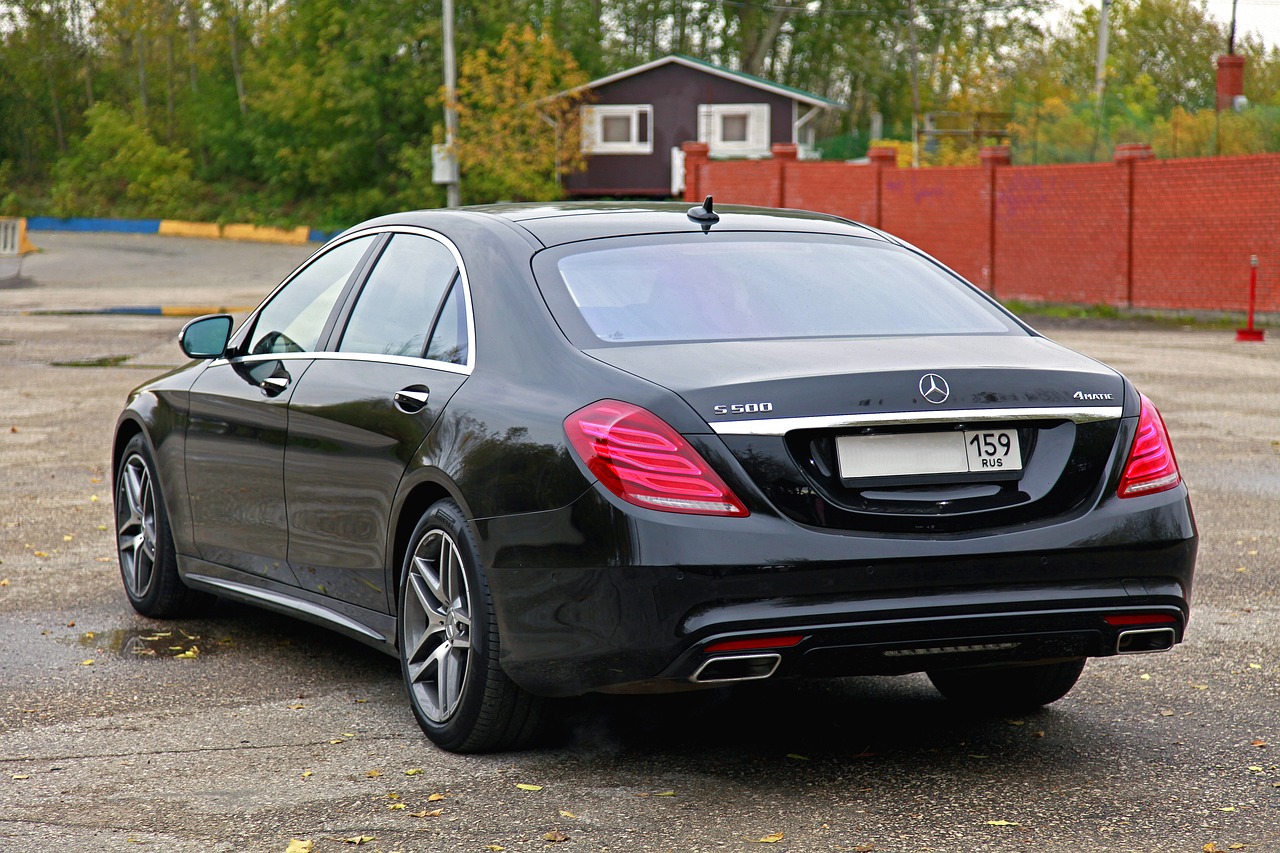
[NFT Marketplaces]
The explosion of non-fungible tokens (NFTs) has taken the digital world by storm, and the Matic Network (now known as Polygon) is at the forefront of this revolution. Imagine a bustling marketplace filled with unique digital art, collectibles, and virtual assets, all thriving without the usual hiccups associated with Ethereum's congestion. That's the magic of Matic! By leveraging its scalability solutions, NFT marketplaces can operate smoothly, allowing creators and collectors to engage in transactions without the fear of exorbitant fees and slow processing times.
One of the standout features of Matic's approach is its ability to significantly reduce transaction costs, making it more feasible for artists and developers to mint and trade NFTs. For instance, while Ethereum's gas fees can soar during peak times, Matic offers a more accessible alternative, enabling users to buy, sell, and trade digital assets at a fraction of the cost. This affordability fosters a more inclusive environment, encouraging more creators to enter the space and share their work with the world.
Moreover, the improved transaction speeds on Matic Network mean that NFT enthusiasts can enjoy a seamless user experience. No more waiting for transactions to confirm while your desired digital asset slips through your fingers! With Matic, transactions can be processed in seconds, allowing for real-time bidding and trading that enhances the overall marketplace experience. Imagine being able to snap up that coveted digital artwork just as it becomes available, all thanks to the lightning-fast capabilities of Matic.
To illustrate the impact of Matic on NFT marketplaces, consider the following table that compares traditional Ethereum transactions with those on Matic:
| Feature | Ethereum | Matic |
|---|---|---|
| Transaction Speed | ~15 seconds | ~2 seconds |
| Average Gas Fee | $20 - $100+ | Less than $1 |
| Scalability | Limited | High |
This table clearly highlights how Matic Network is not just a minor upgrade but a game-changer for NFT marketplaces. As more platforms begin to integrate with Matic, we can expect to see an explosion of creativity and innovation in the NFT space. Artists will have the freedom to experiment without the fear of crippling costs, and collectors will enjoy a vibrant marketplace filled with diverse offerings. The future of NFTs looks bright, and Matic is paving the way for a more accessible and enjoyable experience for everyone involved.
In conclusion, the Matic Network's impact on NFT marketplaces cannot be overstated. By providing a robust infrastructure that supports faster transactions and lower fees, Matic is not only enhancing the way we interact with digital assets but also fostering a thriving community of creators and collectors. As the NFT landscape continues to evolve, Matic will undoubtedly play a crucial role in shaping its future.
- What is Matic Network? Matic Network, now known as Polygon, is a Layer 2 scaling solution for Ethereum that enhances transaction speeds and reduces costs.
- How does Matic improve NFT marketplaces? Matic allows for faster transactions and lower fees, making it easier for users to buy, sell, and trade NFTs.
- Can I mint NFTs on Matic? Yes, artists can mint NFTs on Matic, benefiting from reduced costs and improved transaction times.
- What are the advantages of using Matic for NFTs? The main advantages include lower gas fees, faster transaction speeds, and a more vibrant marketplace environment.
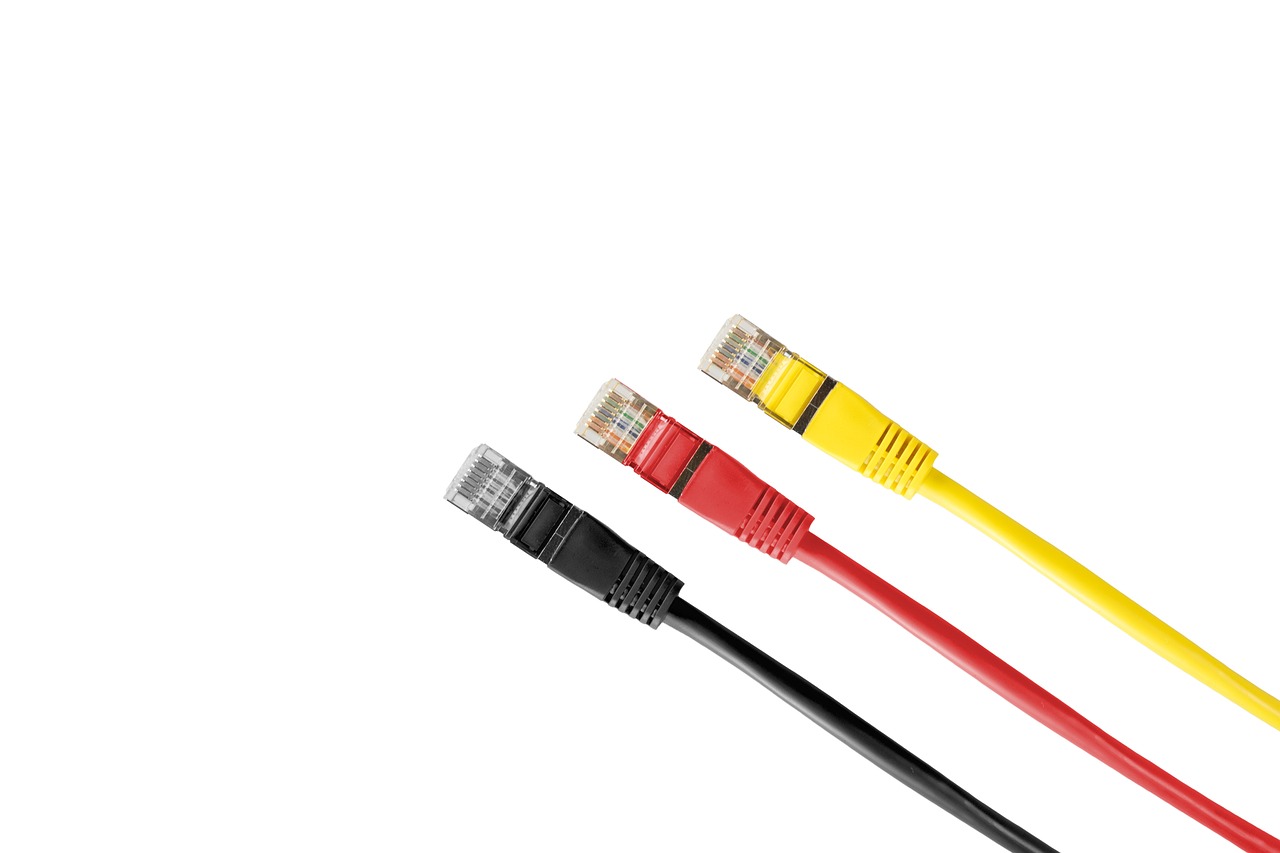
[Future of Matic Network]
The future of Matic Network is not just bright; it's practically glowing with potential! As the network continues to evolve, it is poised to play a crucial role in the broader blockchain ecosystem, especially as it integrates with Ethereum 2.0. This integration is anticipated to enhance scalability significantly while also reducing energy consumption. Imagine a world where transactions are not only faster but also more environmentally friendly—this is the vision Matic Network is working towards.
One of the most exciting aspects of Matic's future is its commitment to sustainability. With Ethereum's shift to a Proof-of-Stake model, Matic is already aligned with the movement towards a greener blockchain. This transition means that the network will consume less energy, making it an attractive option for developers and users who are increasingly concerned about the environmental impact of blockchain technologies. In a world where energy efficiency is paramount, Matic is positioning itself as a leader in sustainable blockchain solutions.
Furthermore, the developer community behind Matic is thriving. With a plethora of ongoing projects and collaborations, the network is fostering an environment ripe for innovation. This active community is not just a bunch of coders; it's a vibrant ecosystem of thinkers, creators, and disruptors who are passionate about pushing the boundaries of what's possible in the blockchain space. The more developers that flock to Matic, the more diverse and robust the applications built on its platform will become.
Moreover, as Matic continues to enhance its infrastructure, we can expect to see a surge in decentralized applications (dApps) that leverage its capabilities. From finance to gaming and beyond, the versatility of Matic Network means that it can support a wide array of use cases. This adaptability will likely attract even more users and developers, creating a self-sustaining cycle of growth and innovation.
In summary, the future of Matic Network is not just about scaling Ethereum; it's about redefining what blockchain can achieve. With its focus on sustainability, a strong developer community, and a commitment to enhancing functionality, Matic is set to become a cornerstone of the blockchain ecosystem. The question isn't whether Matic will succeed; it's how far it will go in transforming the landscape of decentralized technology.
- What is the main purpose of Matic Network?
Matic Network aims to solve Ethereum's scalability issues by providing faster and cheaper transactions through Layer 2 solutions. - How does Matic Network ensure security?
Matic utilizes a combination of the Plasma framework and Proof-of-Stake consensus, which ensures that transactions are secure while maintaining decentralization. - What are some use cases for Matic Network?
Matic supports various applications, including decentralized finance (DeFi), non-fungible tokens (NFTs), and gaming, showcasing its versatility. - How does Matic Network plan to integrate with Ethereum 2.0?
Matic aims to work in harmony with Ethereum 2.0 to enhance scalability and reduce energy consumption, contributing to a more sustainable blockchain environment.

[Integration with Ethereum 2.0]
The integration of Matic Network, now known as Polygon, with Ethereum 2.0 marks a significant milestone in the evolution of blockchain technology. As Ethereum transitions from a Proof-of-Work (PoW) to a Proof-of-Stake (PoS) consensus mechanism, Matic stands to benefit immensely from this upgrade. Imagine a bustling highway that is suddenly expanded to accommodate more vehicles—this is akin to how Ethereum 2.0 aims to enhance the network's capacity, and Matic is set to play a crucial role in this transformation.
One of the primary advantages of this integration is the potential for scalability. Ethereum 2.0 introduces shard chains, which will allow the network to process multiple transactions simultaneously. Matic's Layer 2 solutions will complement this by providing even faster transaction speeds and lower fees. Think of it as a dual-layered cake, where the bottom layer (Ethereum 2.0) provides a robust foundation, while the top layer (Matic) adds the icing that makes the entire experience sweeter and more enjoyable.
Moreover, this synergy will enhance security and decentralization. With Matic's Proof-of-Stake consensus mechanism, validators are incentivized to act honestly, thus ensuring that the network remains secure and efficient. The combination of Ethereum 2.0's PoS and Matic's existing infrastructure creates a more resilient ecosystem. This is vital for the future of decentralized applications (dApps), as users demand not only speed but also trust and reliability in their transactions.
Additionally, the integration will likely lead to an increase in developer activity. As more developers flock to build on a scalable, efficient, and secure network, we can expect a surge in innovative dApps and services that leverage both Ethereum 2.0 and Matic's capabilities. This could pave the way for new use cases across various sectors, including finance, gaming, and digital art.
In conclusion, the integration of Matic Network with Ethereum 2.0 is more than just a technical upgrade; it represents a fundamental shift in how blockchain technology can operate. By combining the strengths of both networks, we can look forward to a future where decentralized applications are not only faster and cheaper but also more secure and user-friendly. As this integration unfolds, it will be exciting to see how developers and users alike will harness these advancements to create a more vibrant blockchain ecosystem.
- What is Matic Network?
Matic Network, now called Polygon, is a Layer 2 scaling solution for Ethereum that aims to enhance transaction throughput and reduce fees.
- How does Matic improve Ethereum's scalability?
Matic uses a combination of Plasma framework and Proof-of-Stake consensus to enable faster and cheaper transactions.
- What are child chains?
Child chains are separate blockchains that operate under the main Ethereum blockchain, allowing for faster transaction processing.
- What is the future of Matic Network?
The future looks promising as Matic continues to evolve and integrate with Ethereum 2.0, enhancing scalability and reducing energy consumption.
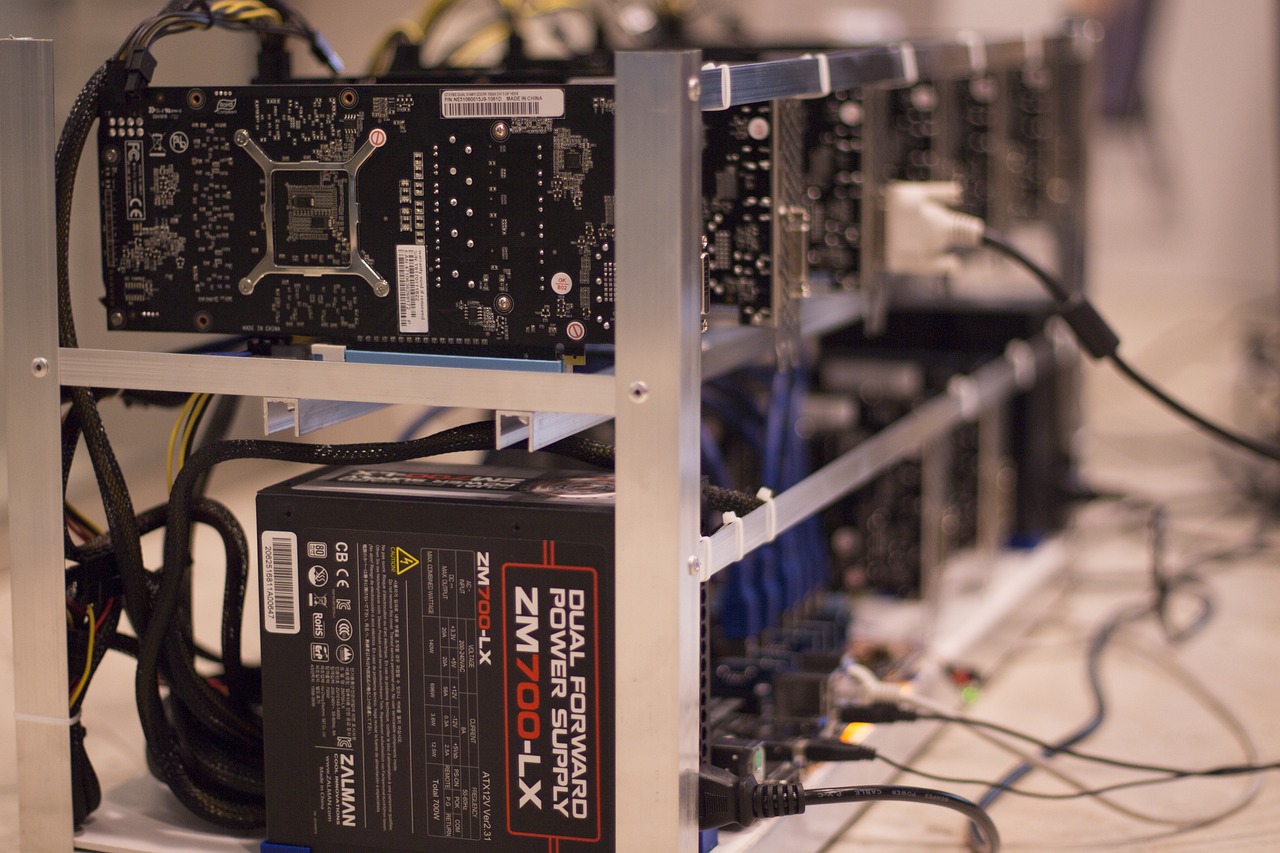
[Community and Development]
The Matic Network, now widely recognized as Polygon, thrives on a vibrant community that plays a crucial role in its development and success. This community is not just a group of users; it's a dynamic ecosystem of developers, enthusiasts, and innovators who are passionate about enhancing the blockchain landscape. With an open-source ethos, Polygon invites developers from around the world to contribute to its growth, fostering a culture of collaboration and creativity.
One of the key aspects of Polygon’s community is its commitment to decentralization. By allowing a diverse range of developers to participate in the network, Polygon ensures that no single entity has control over its development. This decentralization is vital for maintaining the integrity and security of the network, as it draws on the collective knowledge and skills of its members. The community actively engages in discussions, brainstorming sessions, and hackathons, which not only spark innovation but also strengthen the bonds among its members.
Moreover, Polygon has established various development programs and initiatives to support new projects and developers. For instance, the Polygon Grants Program provides financial support to developers working on innovative solutions that enhance the network's capabilities. This initiative not only incentivizes creativity but also accelerates the development of applications that can leverage Polygon's scalability solutions.
In addition to financial support, the community organizes numerous events like meetups, webinars, and conferences where developers can share knowledge, showcase their projects, and learn from one another. These events are instrumental in building a strong network of relationships and fostering a sense of belonging among participants. The collaborative environment encourages developers to share their experiences and insights, which ultimately leads to better solutions and a more robust ecosystem.
Furthermore, the community's involvement extends to educational initiatives aimed at raising awareness about blockchain technology and its applications. By conducting workshops and creating educational content, Polygon helps demystify the technology for newcomers, empowering them to become active participants in the ecosystem. This educational approach not only benefits the individuals involved but also strengthens the overall community by ensuring a continuous influx of fresh ideas and perspectives.
To summarize, the community and development aspects of the Matic Network are vital for its ongoing success. The collaborative spirit, commitment to decentralization, and focus on education create an environment ripe for innovation. As Polygon continues to evolve, the contributions of its community will undoubtedly play a significant role in shaping its future.
- What is Matic Network?
Matic Network, now known as Polygon, is a Layer 2 scaling solution for Ethereum that enhances transaction speeds and reduces costs. - How does Matic improve Ethereum's scalability?
It uses a combination of Plasma framework and Proof-of-Stake consensus to process transactions off the main Ethereum chain. - What are child chains?
Child chains are separate blockchains that operate under the main Ethereum blockchain, facilitating faster transactions. - What are the benefits of using Matic?
Matic offers lower fees, faster transactions, and a secure environment for decentralized applications. - How can developers get involved with Matic Network?
Developers can participate through the Polygon Grants Program, community events, and educational initiatives.
Frequently Asked Questions
- What is Matic Network?
Matic Network, now known as Polygon, is a Layer 2 scaling solution for Ethereum that enhances transaction speeds and reduces costs. By utilizing advanced technologies, it aims to tackle Ethereum's scalability issues while ensuring security and decentralization.
- How does Matic improve Ethereum's scalability?
Matic improves scalability through its unique combination of the Plasma framework and Proof-of-Stake consensus. This allows for transactions to be processed off the main Ethereum chain, significantly reducing congestion and improving overall performance.
- What are child chains in the Matic Network?
Child chains are separate blockchains that operate under the main Ethereum blockchain. They allow for faster transaction processing and enable developers to build scalable applications without compromising on security.
- What are the benefits of using Plasma?
The Plasma framework ensures that the main Ethereum chain remains secure while facilitating increased transaction speeds and lower fees. This makes it a highly attractive option for both developers and users looking for efficient transaction solutions.
- How does the Proof-of-Stake mechanism work in Matic?
Matic's Proof-of-Stake consensus mechanism incentivizes validators to secure the network. This ensures that transactions are processed quickly and efficiently, helping maintain decentralization while enhancing overall network performance.
- What use cases does Matic Network support?
Matic Network supports a variety of use cases, including decentralized finance (DeFi), non-fungible tokens (NFTs), and gaming. Its versatility showcases its potential to transform multiple sectors within the blockchain ecosystem.
- How does Matic benefit DeFi applications?
Matic enables DeFi applications to operate with lower fees and faster transactions, allowing users to trade, lend, and borrow assets seamlessly. This addresses the typical congestion issues faced on the Ethereum network.
- What advantages does Matic provide for NFT marketplaces?
The NFT sector benefits from Matic's scalability solutions by allowing creators and collectors to buy, sell, and trade digital assets with reduced transaction costs and improved user experiences, which are crucial for a thriving marketplace.
- What does the future hold for Matic Network?
The future of Matic Network looks bright as it continues to evolve and integrate with Ethereum 2.0. This integration aims to enhance scalability and reduce energy consumption, positioning Matic as a vital component in the broader blockchain ecosystem.
- How is Matic Network developing its community?
A strong developer community and ongoing projects are essential for Matic's growth. This fosters innovation and collaboration, driving the network's adoption and long-term success in the blockchain space.



















